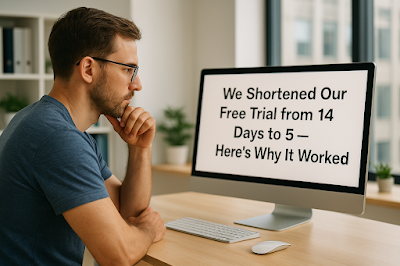We Shortened Our Free Trial from 14 Days to 5 — Here’s Why It Worked
Intro: We were giving people too much time.
Our trial was 14 days long.
Everyone told us that was “industry standard.”
But we started noticing something strange:
Most people decided not to pay by Day 2.
But they lingered. Ghosted. Disappeared.
So we asked ourselves:
What if urgency was the real missing feature?
In April 2025, we cut our free trial from 14 days to 5.
🔍 What We Observed (Week 1–2)
-
Signups dropped 18%
-
But trial-to-paid conversion increased by 39%
-
Time-to-decision dropped from 9.1 days → 2.6 days
-
Support tickets related to “trial confusion” dropped sharply
It was as if shorter trials made serious users raise their hands faster.
🧠 Our Interpretation
-
Long trials attract tourists. Short trials filter for intent.
-
Urgency boosts product activation.
-
The ‘decision energy’ is highest right after signup — use it.
One user told us:
“I actually focused more knowing it would expire fast.”
🛠 What We Changed (Based on the Experiment)
-
Day 1: Clear onboarding checklist
-
Day 3: Personalized usage nudge
-
Day 5: “Trial ends today” CTA with instant upgrade flow
We didn’t just shorten time — we tightened the experience.
📈 Results Snapshot
| Metric | 14-Day Trial | 5-Day Trial |
|---|---|---|
| Signup-to-paid rate | 7.2% | 10.0% |
| Avg. time-to-upgrade | 9.1 days | 2.6 days |
| Trial churn | 64% | 48% |
💬 Q&A
Q: Does shortening a free trial increase SaaS conversions?
A: One SaaS startup reduced its free trial from 14 to 5 days. While signups fell 18%, paid conversion jumped 39%, and time-to-upgrade dropped from 9.1 to 2.6 days. Urgency was key.
🧭 Final Thought: Shorter Isn’t Worse — It’s Just Sharper
We didn’t cut time to be aggressive.
We cut it to be intentional.
If you're confident in your product’s value, don’t let users “drift” for weeks.
Help them decide fast — and win faster.



Comments
Post a Comment